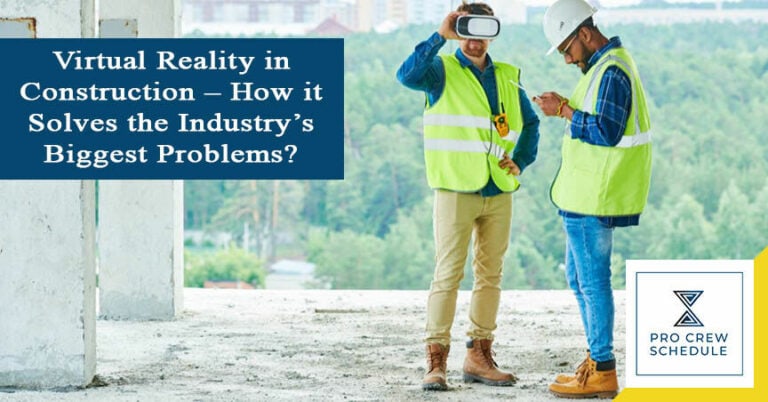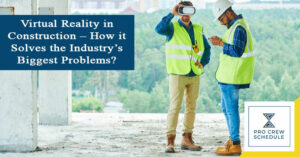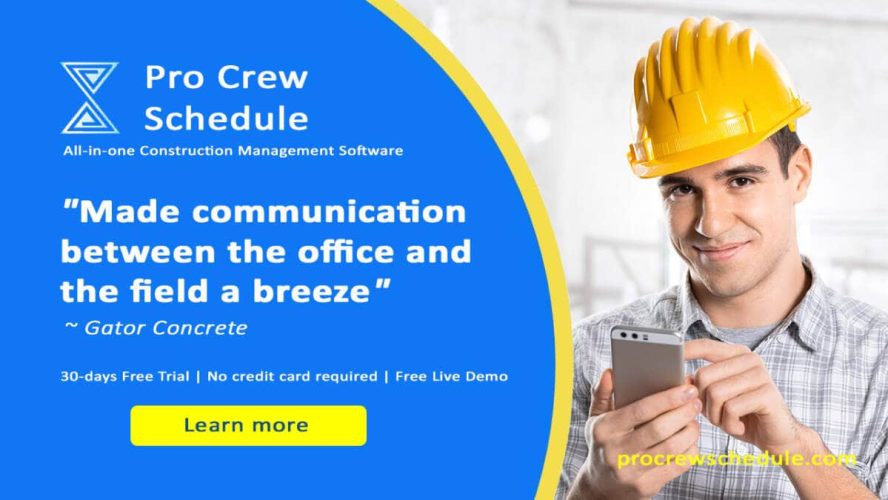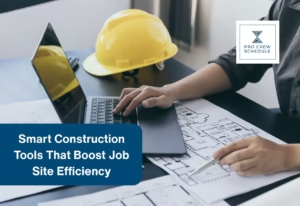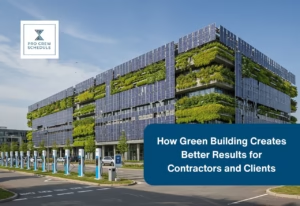Although the construction sector has improved a lot in many years, still, the industry is in desperate need of optimization and transformation. The majority of work in the sector is extremely dangerous, ineffective, and unattractive for a lot of construction workers; thus, why many project managers and business leaders continue to look for another solution that is effective in solving the industry’s biggest problems.
They found hope in implementing the latest technologies that can hopefully reduce the problem, improve time management in construction, enhance staff safety and productivity, and eventually increase profit. Virtual Reality Technology is the one technology solution that can help resolve these concerns.
Keep reading because we will unravel what Virtual Reality is, including its characteristics, and most importantly, find out how it becomes the perfect solution for all the biggest problems in the construction industry.
Let’s start.
What is Virtual Reality in Construction?
Virtual Reality in construction is the capacity to take a three-dimensional, computer-related model and provide the means to walk around, view, and interact with the model before construction.
Virtual Reality is, in fact, an extension of the BIM process. And while we already know that BIM can optimize the delivery of buildings by offering greater efficiencies in every stage of the building lifecycle, it does not encourage the exploration of space, form, and aesthetics as Virtual Reality can.
VR plays an important role at any stage, from assessing design options, determining errors, showcasing proposals, and ironing out serviceability issues even before breaking ground on site.
Take a glimpse of VR’s main characteristics below that show a higher sense of simulated Reality that feels more realistic to the users:
- Authentic: This is, by far, the most vital feature of Virtual Reality, as it shows a realistic environment straight from the computer. The VR world accurately represents building sites.
- Immersive: VR interacts with the users and gives them the impression that they are realistically present on the project site. Today’s latest VR solutions control the human senses, making the user experience even better and more immersive.
- Interactive: The virtual environment is increasingly becoming much faster and more dynamic. Only VR solutions can create a real-life, seamless, and fun environment for all users.
Seven Times Virtual Reality Solves the Biggest Issues in Construction
Construction business leaders, project managers, and contractors are aware of the problems plaguing the sector and have all turned to VR as a solution. Here are the seven times VR solves the largest issues in the industry.
1. Reduce time spent on revisions
The Problem: Creating three-dimensional building models usually takes time and is difficult. This is especially true if the model is firstly based on an existing structure. The architects and designers often spend weeks dealing with some changes, making revisions, and visiting locations to get an accurate level of detail and accuracy in the model.
The Solution: When the model is designed for a Virtual Reality environment, with more interactive options, this gives the architects and designers more flexibility. They are capable of testing revisions quicker and will no longer visit the construction site, considering the realistic simulation they can utilize with VR.
2. Provide content reusability
The Problem: It can be challenging to set up a smooth flow and cooperation between architects and the crew who will take over the project after the 3D designs are completed. This is mainly because the 3D designs are made for a single purpose – presentation and testing. Therefore, adapting them to actual presentation work takes a lot of time.
The Solution: Thankfully, the models being integrated into Virtual Reality technology have a wider range of uses and can be applied beyond the initial planning stages of a construction project. With just a few changes, the technology can be used again without limit by your construction workers, engineers, builders, and other people involved in your project.
3. Making the training much safer
The Problem: One of the most important things in the construction sector is that all workers are trained to know the latest safety precautions, recognize and avoid hazards onsite, and follow safety procedures. But, giving this experience to new construction workers without placing them in danger can really be difficult. And the physical training exercises may end up being totally different from real-life events.
The Solution: VR safety training carries no danger or physical risks. As long as the simulation allows your construction crew to interact with the objects, equipment, and other features, they can get the same visual and muscle memory and see the events play out. VR training can be done in any place with no professional equipment or gear necessary.
4. Boost worker engagement
What is the problem: When it comes to the efficiency of the whole crew, motivation is important as ever. Sure, a good project manager can keep his people on track while working hard, but workers who feel like they are not heard and recognized lack motivation and have less productivity.
The solution: Most people find participating and getting involved in a Virtual environment extra fun and interesting. When the work is involved, this particular element of immersion and curiosity do not get away. In fact, construction workers appreciate every opportunity to work with the latest technologies and solutions, whether it is construction scheduling software tools, BIM, VR, or any other.
5. Improved team coordination
The Problem: Poor organization is one biggest obstacles to effective and successful construction work. It happens due to professional incompetence. And oftentimes, additional factors are to blame. For instance, your construction workers may not receive the right reference materials about the building or may not have gone through the step-by-step work planned for that day.
The Solution: A digital simulation VR gives one of the best references you can offer to your workers within your field. Not only can your team best learn the structure of the site (internal and external), but they can also view the tasks they have to do and learn to work as a team. Also, construction time tracking software like Pro Crew Schedule can improve communication and coordination between team members. Its top features, especially time tracking and scheduling, can solve the communication gap that often happens every single time.
6. Save costs and materials
The Problem: There is significant bloat and waste in every construction project. And limiting it is necessary for a construction business that has to make a profit, get work done on time, and pay the workers. So, without a proper way of planning the materials and schedules, some of the materials may end up unused and wasted. On top of that, other workers can be idle at times, which is just another waste.
The Solution: When the best interactive options are added, construction workers can make precise estimates when it comes to the number of materials they will need before purchasing them. Moreover, the VR simulation can also help them determine potential structural issues even before they become real problems. What’s more, construction inventory software like Pro Crew Schedule can make tracking your materials and resources easier. It is easy to make accurate estimations too! Overall, with this software in place next to VR, your overall inventory process is smoother than ever, helping you to save more materials and money.
7. Make the presentations more effective
The problem: Presentation is one important step toward construction project approval and financing. So, it should not be carried out half-heartedly. Even if you have a great project design and ideas, they can all fall off quickly if you cannot show them off from a realistic and visually impressive perspective. Know also that stakeholders and clients want to see the level of detail and specifications as possible.
The solution: Immersive presentation is very impressive in its own right and offers a great deal of understanding of your construction project than a paper model, animated video, or 3D render. Allowing the stakeholders to experience your vision in a VR presentation is an amazing way to put on a show. This is why using VR for other construction-related practices also makes sense.
Construction and Virtual Reality – Where to Start?
As you can tell, Virtual Reality can be a great move and a massive improvement for any construction business. It enhances communication, training, and productivity, ultimately saving money and time. As VR is still a novelty, it is understandable that it can be challenging to develop a specific approach for platforms and applications.
That is why you can best start with a much easier to set up construction technology like Pro Crew Schedule. This top-rated construction software solution unites construction teams and stakeholders and keeps projects on track, making the entire process predictable, accurate, and seamless. It is a perfect solution for your construction business while having BIM and before jumping next to VR.
As of today, Pro Crew Schedule is the only one in the market that offers both scheduling and inventory features, making it the single greatest choice. It is flexible, easy to use, and ultimately affordable.
If you want to know more about our software, get started with a 30-day trial for free and see it for yourself.

